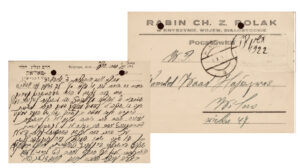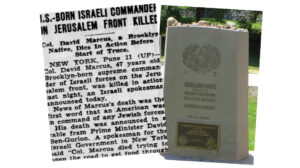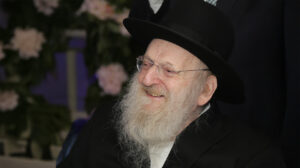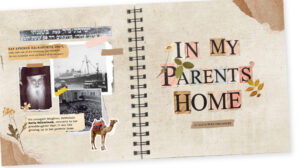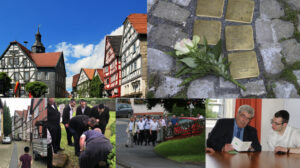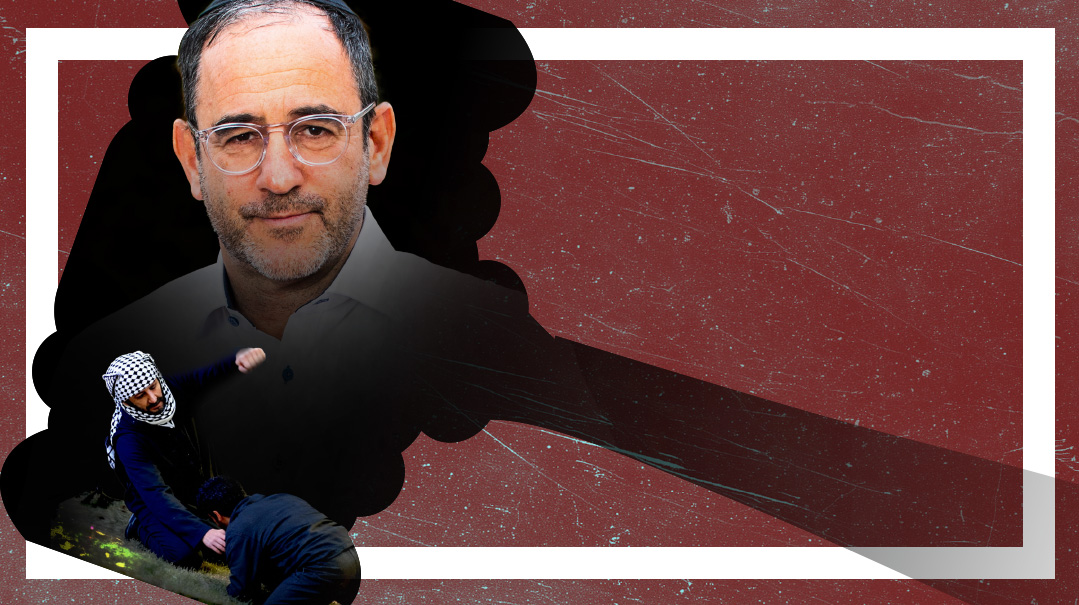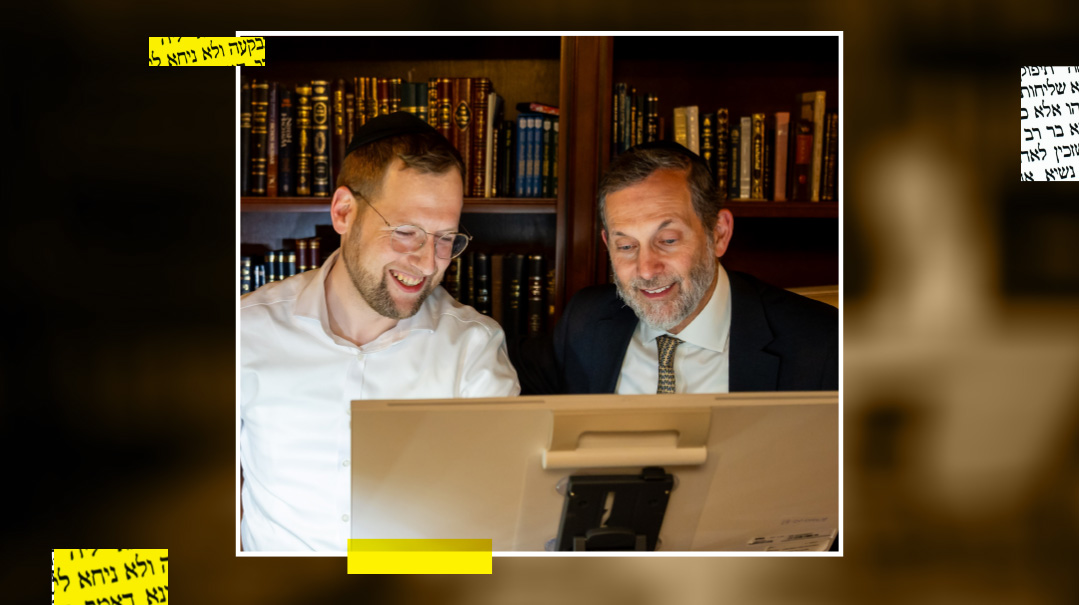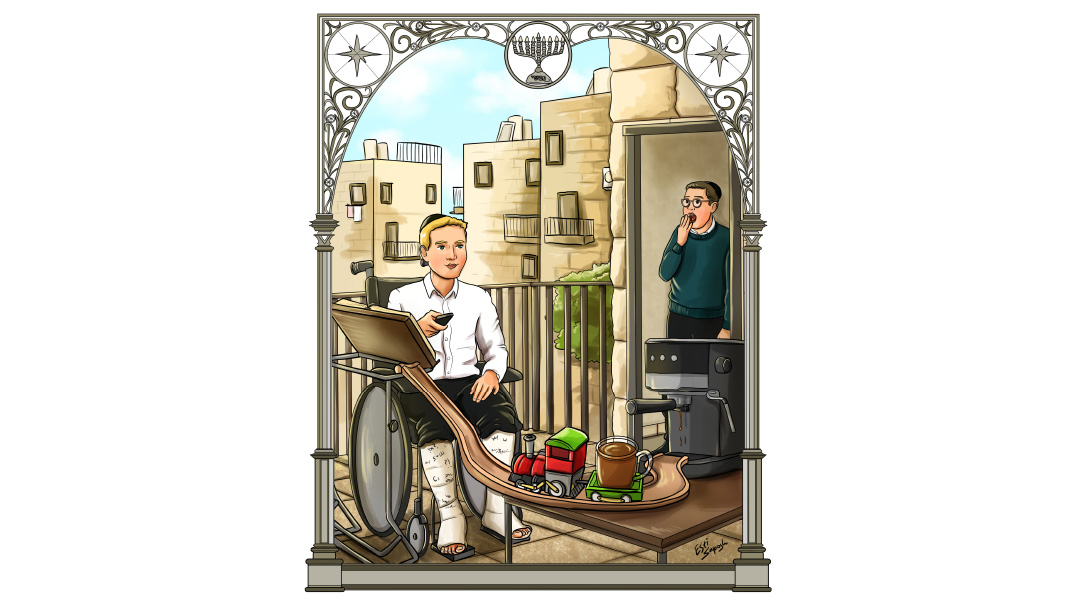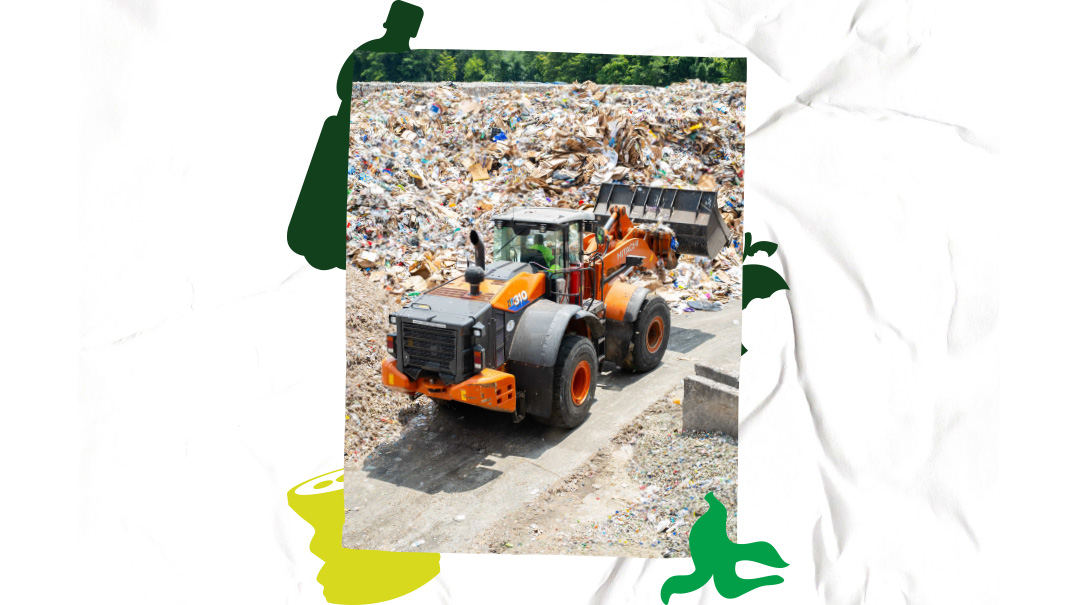Swiss Account
| December 25, 2019Although over eight decades have passed since Rav Steinman was sheltered in Montreux, veteran Swiss residents remember the gift he left
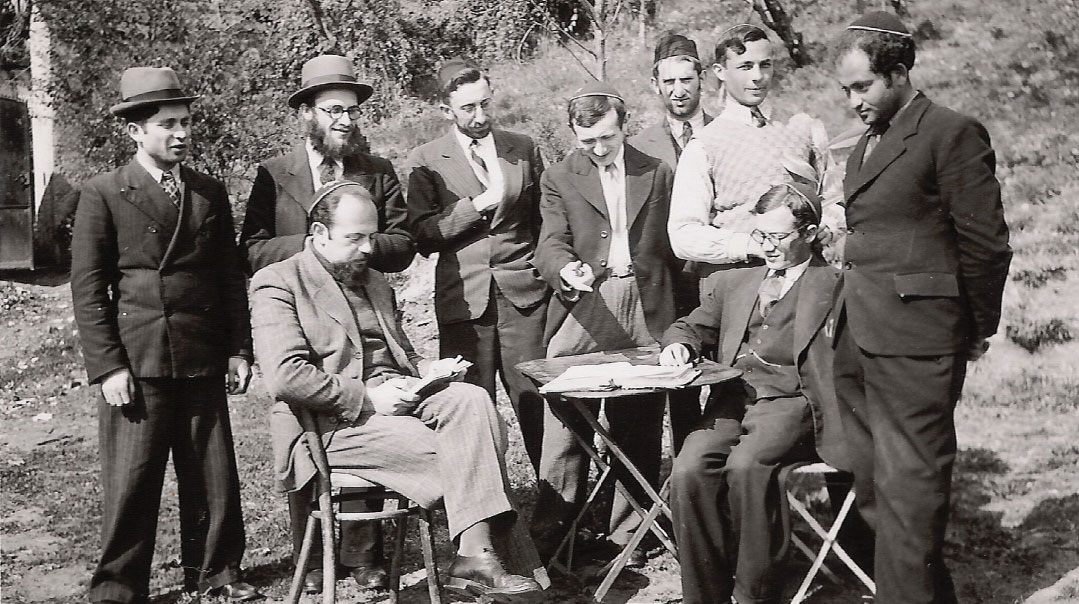
Photos Mishpacha archives
The Torah community of Switzerland is a small, tight-knit, and famously stalwart enclave. It’s really a microcosm of the frum world, with members who represent a panoply of Jewish streams and backgrounds — chassidish, yekkish, yeshivish, balabatish, and Modern Orthodox. It has often been noted that here, “even the chassidim have a certain yekkishkeit,” a certain correctness, which mirrors the unique character of their host country.
It’s now over eight decades since Rav Aharon Leib Steinman spent the turbulent years of 1937 to 1945 sheltered in the small, neutral haven Switzerland provided. While the Rosh Yeshivah eventually made his way to Eretz Yisrael after the war, his close friend and chavrusa, Rav Moshe Soloveitchik — here they pronounce the “ei” like “sky” — remained in Switzerland and became known as the “Swiss Gadol,” whom so many in the small kehillah were deeply attached to, until his passing in 1995. Rav Moshe’s name still evokes tremendous reverence and affection, but those who are old enough to remember still look back to the time when the two great yeshivah bochurim learned in their midst. It’s as if the wartime chavrusashaft between Rav Aharon Leib and Rav Moshe left behind a special gift in this tranquil, Alpine land. When they arrived, it was a land unsown, with Torah scholars few and far between. But once they had kindled the flame, that spiritual fire warmed the hearts and minds of a new generation.
Of course, most of the people who had contact with Rav Aharon Leib during those years have passed on, but Mishpacha tracked down some veteran Swiss residents and their children who remember those days when Switzerland served as a haven for those fortunate to be sheltered within its borders.
A world away from Rav Aharon Leib Steinman’s hometown of Brisk, in a medium-sized Swiss resort town on the shores of Lake Geneva, stood a small, relatively new yeshivah. Yeshivas Eitz Chaim of Montreux was founded by Rav Eliyahu Botchko in 1927. (Rav Botchko was a brother-in-law of heroic Holocaust rescue worker Mrs. Recha Sternbuch, as his wife, Rebbetzin Sarah Rivkah Botchko, was a sister of Yitzchak Sternbuch.) In 1937, that yeshivah proved to be the salvation of two prime talmidim from Brisk, who needed to escape Eastern Europe in a hurry.
While all of the bochurim in Brisk were under threat of being drafted into the Polish army, many of them were exempted because authorities agreed that their frail bodies could not withstand the rigors of war; others were able to register as minors. Those who didn’t qualify for either exemption had no choice but to flee, but that was no simple option either. Only those with a justifiable reason for leaving, such as an invitation to study at an educational institution abroad, were permitted to travel outside the country.
By that point, Moshe Soloveitchik and Aharon Leib Steinman had become close friends while learning in Yeshivas Toras Chesed in Brisk. (Rav Aharon Leib spent most of his early years learning in Brisk, aside from some periods when he studied in the yeshivos of Kletz and then Kobrin). They also gained a derech halimud by hearing shiurim from the Brisker Rav, Rav Yitzchak Zev Soloveitchik, who was Moshe’s uncle (his father, Rav Yisroel Gershon, was Rav Yitzchak Zev’s oldest brother).
As the date to report to the army drew near, they tried valiantly to obtain an exemption, eating and drinking little and walking briskly to lose as much weight as possible. The evening before their meeting, they walked all the way to Kamenitz to ask the Rosh Yeshivah, Rav Boruch Ber Leibowitz, for a brachah.
Their efforts yielded a minor reprieve. The authorities decided not to draft them immediately, but to put them on a waiting list for whenever more soldiers would be needed.
Meanwhile, Rav Steinman’s father discussed his son’s predicament with the Brisker Rav, who was concerned about the fate of two of his nephews — Moshe Soloveitchik and Leibel Glickson, his sister’s son — who were also considered draft-worthy.
The ticket to freedom from all three came from an unexpected source. One day, a letter with a Shabbos-related sh’eilah arrived at the home of the dayan of Brisk, Rav Simchah Zelig Reiger, from Rav Botchko, rosh yeshivah of Montreux, Switzerland. After receiving the letter, he had an idea: Rav Botchko has a yeshivah in Switzerland, and two of Rav Chaim’s grandsons, plus another star talmid, had a problem with the army. Perhaps Rav Botchko could send him a letter requesting three maggidei shiur in Switzerland?
A few weeks later, invitations arrived for all three to join the yeshivah in Montreux.
It may have been miles away, with a totally different culture, a longing for his family and rebbeim, and a shortage of talmidei chachamim with whom to plumb the depths of the sugyas, but for Rav Aharon Leib it was learning as usual — as in Brisk, so in exile. In the small town in this French-speaking canton of Switzerland, both Rav Aharon Leib and Rav Moshe served as maggidei shiur to the young bochurim in Montreux. Their presence had a tremendous impact on the students, who were mainly Swiss and German youngsters, some of whom were taken aback by the frumkeit and chumras of Rav Aharon Leib and Rav Moshe, and they jokingly referred to them as “the Rebbe Reb Meilech and the Rebbe Reb Zishe.”
Rav Chaim Erlanger z”l of Lugano— a humble giant in avodah in his own right and brother of Rav Avrohom Erlanger, author of the Sefer Birkas Avrohom) was a talmid in Montreux during those years. According to his son, “My father used to tell us how Rav Aharon Leib had nothing to do with Olam Hazeh even then. He didn’t sleep — he’d rest on his shtender instead of going to bed — and he hardly ate.” The highlight of Rav Chaim’s uplifting seder night was the beautiful tune that he sang for B’tzeis Yisrael in Hallel. “When we asked him where the niggun was from, my father told us he’d first heard it back in yeshivah from Rav Aharon Leib Steinman, who learned Gemara in Yeshivas Eitz Chaim with a beautiful niggun of dveikus.”
Rabbi Duvid Heller was one of the talmidim who became close to the two scholars from Brisk, and several years later, he joined them on the yeshivah staff, giving a shiur of his own. Young Duvid had arrived at Eitz Chaim in Montreux from Karlsruhe, Germany, in 1935, shortly after his bar mitzvah, joining his friend, Yossel Leiner, who came from the same town.
Rabbi Heller’s daughter, Mrs. Naomi Gorelick, shares an interesting story. “When my father’s younger brother was bar mitzvah in Karlsruhe, a couple of years after he left to Montreux, it had become impossible to obtain tefillin in that part of Germany. His widowed mother ordered tefillin from Poland, but the war had begun, and they never arrived.
“My father sent his own tefillin home to his brother, and for years, until the war was over, he was compelled to borrow tefillin. Every morning, he davened early, using Rav Aharon Leib’s tefillin and replacing them in time for Reb Aharon Leib to use them at Shacharis in the yeshivah.”
The Montreux community was tiny, and among the prominent families were Yitzchak and Recha Sternbuch, who were intensely involved with helping refugees in Switzerland and with assisting Jews under the Nazis. This special couple had a real appreciation for talmidei chachamim, and the Sternbuchs’ daughter, Rebbetzin Netty Segal of New York, remembers that “Rav Aharon Leib and Rav Moshe both spent a lot of time in our home.” In 1939, the Sternbuchs and other Jewish rescue workers in Switzerland supplied trapped Jews with South American passports. Providentially, the Germans recognized these documents, and their holders were exempt from deportation to death camps and instead were interned in separate camps (until April 1944, when the Germans suddenly changed course and annihilated the majority of these Jews). Yitzchak and Recha obtained Paraguayan passports from the Paraguayan consul in Bern, two of which were sent to Rav Steinman’s family in Brisk. It is unknown, however, whether the passports ever reached the Steinmans.
Switzerland flanked France, Germany, Austria, and Italy, and was officially neutral during the war years. Yet its borders were essentially sealed against Jews trying to flee the Nazis. Occasionally, women and children and even men managed to get smuggled across the border, but more often than not they were caught by the border guards and sent back to the Nazi-controlled territories they had fled. Others were allowed to remain in the country but interned in camps. They were forbidden to work, lest they take jobs from Swiss citizens.
One part of Mrs. Sternbuch’s activism was aiding the Jews who had been caught trying to smuggle themselves over the border and who were subsequently interned in the detention camps. Mrs. Sternbuch tried to smuggle them (forged) passports to prevent them from being handed back into the hands of the Gestapo. Rav Aharon Leib told the Sternbuch grandchildren that he had been sent on such errands a few times, even once travelling on Shabbos as it was a situation of pikuach nefesh.
He also described spending one Seder night at the Sternbuch home in Montreux. There were many guests, including ten other yeshivah bochurim. As the bnei Torah of the crowd, they were honored with the most comfortable beds, and it was only afterwards that they realized that Reb Yitzchak and Recha Sternbuch had given away every last sleeping space in their apartment, and had gone after the seder to spend the night in their factory.
After they had learned in Montreux for some time, Rav Aharon Leib, Rav Moshe Soloveitchik, Reb Yossef Leiner, and another bochur, moved to the small nearby town of Bex (pronounced Bey) -les-Bains.
The little group rented a room and learned together. There were other Jewish refugees in Bex at the time as well — some Swiss Jews who had migrated from Basel, which is in northern Switzerland, fearing a German invasion of the northern area. An Orthodox children’s home called Institut Ascher functioned in the town too. Reb Yitzchok Rosengarten of Bnei Brak, who was Rav Aharon Leib’s gabbai and driver for many years, says that both his parents were in Bex when the Rosh Yeshivah’s group was there.
“Anyone who could leave the German canton for the French canton — Montreux, Lausanne, Geneva, Bex — did so,” Reb Yitzchok says. “My grandmother was a sister of Mrs. Ascher, who ran the institute, so she and my mother came to Bex. When my grandmother found that there was a group of foreign yeshivah bochurim in the town, she assisted them by finding them a small rental and let them use the facility. At the time my father was a bochur living in Zurich. He had learned in the great yeshivos of Telshe and Kamenitz and then returned to Switzerland when his mother had fallen ill. He too moved to Bex, and when he came across Rav Aharon Leib, Rav Moshe, and the rest of the group of accomplished talmidei chachamim, he attached himself to them.”
Rav Moshe Soloveitchik’s son says that the Yamim Noraim spent in Bex were nerve-wracking. “They had just a minyan — ten people. One member went to rest after Shacharis, and the entire group had to wait for him to continue davening. Rav Aharon Leib was the baal tefillah. My father was an expert baal tokeia all his life, but that year, although he put the shofar to his lips and tried again and again, the tekios were very weak. It was a terrible year for the Jews in Europe, and Rav Aharon Leib said afterwards that Reb Moshe’s tekios could possibly have sweetened the gezeiros — but they were not meant to, so the shofar didn’t work.”
Rabbi Yosef Erlanger of Jerusalem’s Bayit Vegan neighborhood was 14 years old when he first met Rav Steinman in Bex. The Erlanger family lived in Lucerne, but the boys were sent to Bex to spend their summer vacation. “I was among a group of boys who learned with Rav Aharon Leib that summer. One of the older boys, who had organized our group, married soon afterward and settled in Lucerne. He then invited Rav Aharon Leib to come to Lucerne and learn with us there — and Rav Aharon Leib accepted the invitation.” This fell through after a few months, though: As a Polish refugee, the local authorities in Lucerne gave Rav Steinman no peace, and he had to move again. Taking along this small group of students with the permission of their parents, Rav Steinman moved back to Montreux. “We had our own chaburah in the yeshivah there, and Rav Aharon Leib was our apotropus [guardian],” says Rabbi Erlanger.
Back in Montreux, the presence of Rav Aharon Leib continued to have an influence on the young bochurim. Mr. Justin Meyer, a pillar of Basel’s Jewish community, learned in the Eitz Chaim yeshivah from 1944-1946. “I remember Rav Aharon Leib sitting there at the back of the beis medrash. He learned there non-stop, together with a chavrusa by the name of Rabbi Shloime Zalman Tigerman, a learned scholar who also moved to Bnei Brak later [he is the father-in-law of posek Rav Mordechai Gross]. Rav Steinman let me know that my German name “Justin” (pronounced Yustin) is mentioned in Chazal, in Maseches Shekalim. He remembered me by name for years later.”
As war progressed, the situation in Switzerland became more difficult. A landlocked country surrounded by warring nations, the Swiss were both short of supplies and fearful of a German invasion, despite their declared neutrality.
At some point, the Swiss authorities became concerned about the “fleuchtling” (refugees) — even those who had entered the country legally or before the war. First, they were compelled to work at certain necessary trades which were in short supply, forcing Montreux talmidim like Rabbi Duvid Heller to spend their nights working for a baker. Then, they were separated from the populace, lest they be spying or working for enemy regimes.
“Rav Aharon Leib Steinman and Rav Moshe Soloveitchik, both Polish citizens, were among a group of young yeshivah men who were rounded up and taken to the Schönburg arbeitslager, a work camp in Northern Switzerland, not far from Basel, where they had to lay down roads,” says the widow of Reb Yossel Leiner, whose husband was also interned. “Without the heavy machinery used today,” she says, “the work was crushing.”
“My father was strong, whereas Rav Aharon Leib was physically weak,” says Rav Moshe Soloveitchik’s son. “He was able to help his friend by doing his work quota for him there in Schonburg. My father once told me that when dynamite was used, the camp foreman told the workers where to stand to avoid injury. But my father made his own calculations and stood elsewhere, and his judgement of the situation turned out to be accurate.”
While they had to battle the elements while working outside, the living accommodations weren’t as bad. The Jews were housed on the ground floor of what had been the Schönburg hotel (today it’s a well-appointed resort hotel).
The work involved paving wide roads through the mountains, yet the song of Gemara never ceased. Eyewitnesses who visited the labor camp recalled that even as they worked, the two Brisker talmidim learned b’al peh. “One said the Gemara from memory, while the other quoted the Tosafos,” says Rabbi Yitzchok Rosengarten. “People who saw them realized that these were Jews who lived in another world.”
Fortunately, meat was never part of the camp rations. The prisoners were served from an entirely dairy kitchen, which made kashrus simpler, and Rav Moshe Soloveitchik also arranged the loan of a Sefer Torah from the Jewish community in Basel.
Rav Aharon Leib never spoke much about this time, but he did once tell Rabbi Rosengarten that the camp foreman had respect for Rav Moshe Soloveitchik, who had great presence, even in his youth, and he wanted to please him. He therefore agreed that the Jews did not have to work on Shabbos.
After a short period, Rav Aharon Leib was declared unfit for labor and released.
While the war was raging in Eastern Europe, Rav Aharon Leib – who would later learn that he was the only surviving member of his immediate family -- rented a room in Lugano, once again with his close friend Rav Moshe, and was joined part of the time by a third bochur. Lugano, on the Swiss-Italian border, was a community apart. The kehillah’s roots were chassidish, and the community, infused with Torah, had a warm, heimishe atmosphere, and lived in relative comfort.
During that time, Rav Aharon Leib often spent Shabbos and Yom Tov meals with the Rubinfeld family. Reb Leibish Rubinfeld, one of Lugano’s well-known balabatim, greatly appreciated the depth and breadth of Rav Steinman’s learning. Rav Steinman learned regularly with Reb Leibish’s two sons-in-law, the two Schreiber brothers, who were sons of Rav Akiva Sofer, the Pressburger Rav.
According to Reb Leibish’s son, Reb Dovid Rubinfeld of London, who was a young bochur then, it was already obvious that the young Rav Steinman was a special individual. “Rav Aharon Leib kept himself extremely bahalten and acted simply. In a sense, his life then was the opposite of his later years when he was a recognized gadol. But although he neither expected nor accepted honor, we could see he was head and shoulders above the norm. I can remember that he came to our house in the evenings, after supper, to learn with my father. They learned gemara Zevachim together and often spoke in learning.”
One of Reb Leibish’s older grandsons also treasures his memories of Rav Aharon Leib in Lugano. “When we went to Rav Aharon Leib’s apartment, we knew that we had to wait quite a few minutes after knocking for him to get to the door,” he remembers. “It was because he was learning Gemara in his tallis and tefillin, and in his humility, he didn’t want to be seen like that.”
It was Mrs. Recha Sternbuch who arranged Rav Aharon Leib’s shidduch. Tamar (Temma) Kornfeld was a friend of Recha’s from Antwerp, Belgium. During the war, her parents fled Antwerp and reached Lyon, France, from where her father was taken to the camps. Tamar managed to escape to Switzerland alone. (She was later reunited with her mother, who lived with the Steinmans in Bnei Brak until her petirah in the 1960s.)
The Sternbuchs spoke to Rav Aharon Leib first. When he heard about Tamar’s qualities, he agreed to meet her. Tamar, though, was unsure. She didn’t feel comfortable listening to a shidduch suggestion while she could not ask her parents’ advice and didn’t even know if they were still alive. Recha spent hours convincing Tamar that although her family’s fate was unknown, the right thing to do was to move ahead with marriage and build another Jewish home. One day, Mrs. Sternbuch took Tamar for a walk in the direction of the Eitz Chaim yeshivah, where they caught sight of Rav Aharon Leib learning outside in the grounds with two chavrusas. Impressed, Tamar agreed to meet him at the Sternbuch home.
Reb Aharon Leib once told a grandchild that the shidduch between himself and the Rebbetzin was a shining manifestation of Hashgacha pratis. The shidduchim suggested to him in Brisk had not worked out, to his disappointment at the time. Askanim in Poland had tried to arrange his army exemption but been unsuccessful. Yet it was only because he was single that he faced the draft and was forced to flee, and this led to him surviving the war and marriage to Rebbetzin Tamar.
Rav Aharon Leib was 30, Rebbetzin Tamar 35. Their wedding was a small wartime affair, but it was made extraordinary by the warmth, love, and generosity of their friends. A small crowd — roughly 16 couples, plus another few bochurim—gathered at 2 p.m. on a Sunday afternoon in the Levin Hotel in Arosa. On the porch with its panoramic view of snow-capped mountains, stood a small chuppah. Rav Aharon Leib was accompanied by Rav Yaakov Erlanger, Reb Leibish Rubinfeld, and Reb Yoel Yavner. Rebbetzin Tamar was led to the chuppah led by Mrs. Recha Sternbuch and Mrs. Esther Rubinfeld. The mesader kiddushin was Rav Mordechai Yaakov Breisch, the rav in Zurich and author of the sefer Chelkas Yaakov. The chassan’s close friend Reb Moshe Soloveitchik and Reb Yossel Leiner were both in attendance.
Asked by his grandchildren why the wedding was so small, Rav Aharon Leib replied that as he did not have his own funds and was accepting gifts from others, he did not extend more invitations. Reb Leibish Rubinfeld paid for much of the wedding. Each man present —besides the chassan himself — gave a speech at the seudah which followed in the hotel dining room.
Mrs. Recha Sternbuch prepared boxes of clothing, linen, and towels for the couple to take to Lugano, where they would live after their wedding.
After his marriage, when he returned to Lugano, Rav Aharon Leib tutored some young students for a living. “Rav Aharon Leib, once married, spent Shabbos seudos at home with his rebbetzin, not with us, and we saw him only in the beis medrash or when he made brief visits to our home,” says Reb Duvid Rubinfeld. Rav Chaim Erlanger’s children say that their father cherished another memory: the open ahavas haTorah which Rav Aharon Leib allowed to overflow on Simchas Torah. “When davening and hakafos were over in the small shul in Lugano, the shul emptied out. The families trooped home for their seudah, while Rav Aharon Leib,Rav Moshe Soloveitchik and my father remained in the shul, singing songs of dveikus for hours,” says Rav Chaim Erlanger’s son.
(As a side note, it was well-known that Rav Steinman lacked a sense of smell, but what many don’t know is that so did his rebbetzin. In Lugano, the couple lived in an apartment close to a church, where the priests burned incense and part of their religious rites. The Steinmans didn’t want to derive any pleasure from the scent that wafted into their home, and so they davened that Hashem take away their sense of smell.)
Long after the Steinmans moved to Eretz Yisrael in 1945, the Rosh Yeshiva retained a special fondness and gratitude to those families who had helped him in Switzerland. He wrote letters to the Rubinfelds and always gave a warm welcome to the children of the Leiner, Rubinfeld, Erlanger, and Heller families, among several others. The gift of his presence in their midst continues to inspire the spread of Torah among the Swiss Jewry.
(Originally featured in Mishpacha, Issue 791)
Oops! We could not locate your form.

